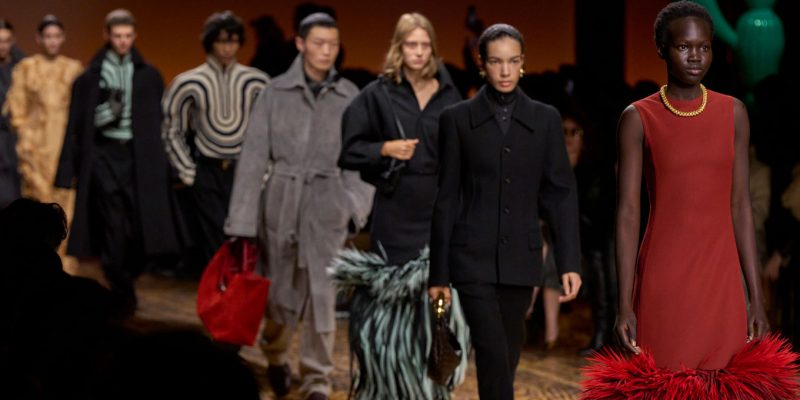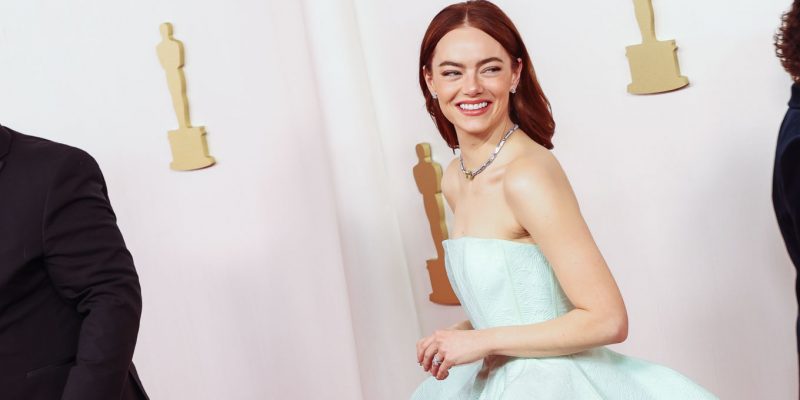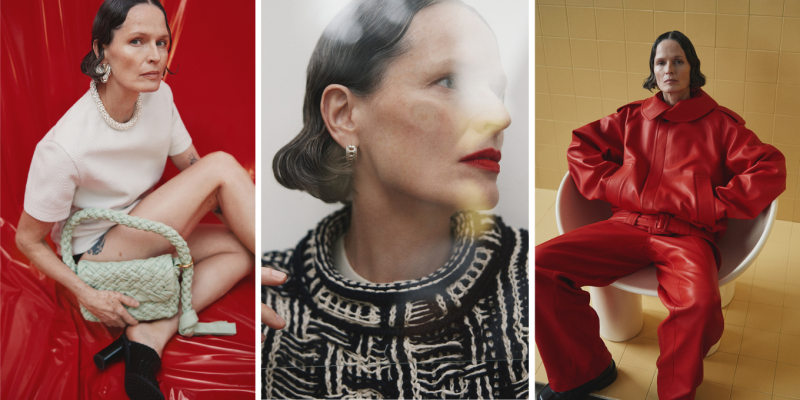Trends
Why Early 2000s Fashion is Trending (Again)
From low-rise jeans to rhinestoned belts, the campiness of early 2000s fashion is back—but this time, with an empowering twist.
by : Randi Bergman- Sep 27th, 2021
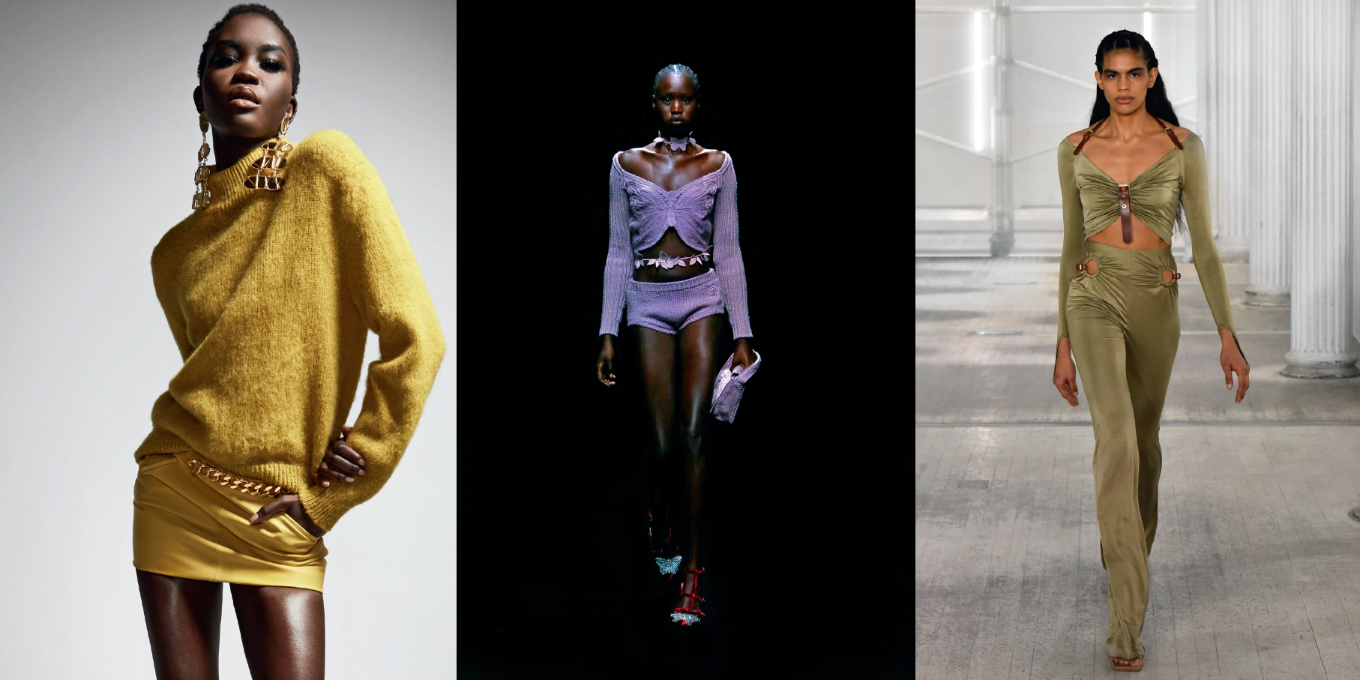
The inexplicable wild style of the Y2K era, both beloved and maligned for its thong-exposing low-rise jeans, bedazzled pastel sweatsuits and logo-covered designer everything, has finally eclipsed the reign of the ’90s. Overt tackiness is back, baby. And that means even Ed Hardy.
As we cautiously emerge from the great upheaval of the past year and a half, we’re craving all-out glamour, especially of the ostentatious variety. In a post-9/11 world, we had similar fashion leanings. Traumatic times are typically followed by conservative, practical fashion choices, but sometimes it’s the complete inverse. The Roaring Twenties, for example, celebrated the end of the First World War with flapper dresses, pixie cuts and Gatsbyesque bacchanalia. The post-9/11 fashionscape saw Louis Vuitton transform its iconic monogram into a Murakami cartoon confection, Versace trade exclusively in ruffles and silk and Destiny’s Child wear the quintessential looks of the era—from tropical-print bustier tops to rhinestone belts—in threes. Meanwhile, Carrie Bradshaw taught everyone the art of overaccessorizing.
“When we’re thinking about post-trauma fashion, there is definitely this renewed sense of everyone’s body and everyone’s individuality and physicality,” says Rachel Seville Tashjian, a GQ fashion critic. Enter Blumarine, whose millennial creative director, Nicola Brognano, mined his own teen years to deliver a gorgeously cacophonous ode to the excess of the early aughts for his fall/winter 2021/2022 collection: low-rise bell-bottoms that were paired with oversized butterfly-motif belts; scarf tops and faux-fur-trimmed cardigans; cascading ruffled dresses and lace-trimmed slips that were paired with newsboy caps; and matching beaded sets that felt worthy of Britney Spears’ performance of “Oops!… I Did It Again” at the 2000 MTV Video Music Awards. “I think that this is the right moment to talk about the 2000s because now more than ever, people need happiness, joyfulness and a sense of lightness—and these three elements with a touch of extravagant glamour describe those years perfectly,” says Brognano. Meanwhile, Tom Ford referenced his own sexed-up archive from his influential days at the helm of Gucci. Über-low-rises and daring hemlines were back in the form of leather hot pants and miniskirts so short that—as your grandma might say—you could see what the models ate for lunch. Even Prada, with its sequin-lined shrugs, suggested the type of impractical glamour that hearkens back to fashion’s most OTT decade.
“When we're thinking about post-trauma fashion, there is definitely this renewed sense of everyone's body and everyone's individuality and physicality.”
Nostalgic reboots typically follow a 20-year cycle. So for those who track the coming and going of trends, it’s no surprise that we’re shopping for Fendi baguettes and celebrating the reunification of Bennifer (the emblematic couple of the early aughts) with the fire of a thousand suns. But something about this style resurgence hits different. It’s been fuelled by not just fashion’s power players but also those who were too young to experience the decade the first time around. On TikTok, videos tagged #Y2Kaesthetic and #Y2Kfashion have a combined 440 million views and counting. These videos—which range from sharing thrift-store hauls to a 2000s-pop-star challenge that asks users to create outfits for an imaginary day in the life of Britney or Xtina—live beside ones that explore the fashion of the ’60s, ’70s and beyond. “When I look on TikTok, I see a flattening of time and a buffet of available styles,” says Seville Tashjian. “It really is an expression of pure interest in a certain aesthetic that just feels right right now. It’s not that enough things have changed that now that [aesthetic] looks good, because it never looked like anything to a lot of these people.”
This resurrected aesthetic has also been stripped of the fatphobia that those who lived through it the first time around will remember. A quick flashback to tabloid headlines of the early 2000s reveals the endless skewering of female stars for weight gain, the celebration of drastic diets and the chastisement of those who went past the ideal level of skinny. “Nicole Richie, Anorexic Again,” “Sandra Bullock, Obsessed With Being Skinny” and “Mary-Kate, Going to Extremes” are just a few toxic examples. Fashion at the time was made for one type of body: impossibly thin. “I remember being incredibly self-conscious while shopping in the ninth grade even though I was a size 4,” says Lauren Chan, a plus-size model and founder of size-inclusive brand Henning. “I was looking for pieces that hid my arms or lower belly because I was still much heavier than the size 0 models and celebrities I adored.” By contrast, in 2021, models Paloma Elsesser and Hailey Bieber both proudly rock the whale tail and receive equal levels of praise.
Late last year, Seville Tashjian launched “Opulent Tips,” a newsletter that celebrates glamour, lavishness and all things antithetical to athleisure-heavy influencer culture. In it, she waxes poetic about everything from archival Tom Ford for Gucci to splurging on expensive china as a way to show off one’s style. “There’s going to be a big shift toward expressing yourself in a very lavish and obvious way over the next decade,” she says. “And I feel like there isn’t anything anymore that looks bad or is a faux pas. Right now, there’s this sense that you can make anything look great with the right attitude.”
As I scroll through the feed of Adriana Hot Couture, an eccentric Italian fashion brand that sells lace- and rosette-trimmed ice-skating unitards in neon hues and feather-trimmed Juicy-inspired velour bustier tops, I can’t help but agree.
Read more:
All the Trendiest Shoes for Fall 2021
The Best Street Style From New York Fashion Week
Shop the Best Biker Shorts You Can Wear This Summer and Beyond
Newsletter
Join our mailing list for the latest and biggest in fashion trends, beauty, culture and celebrity.
More from Trends
Read Next
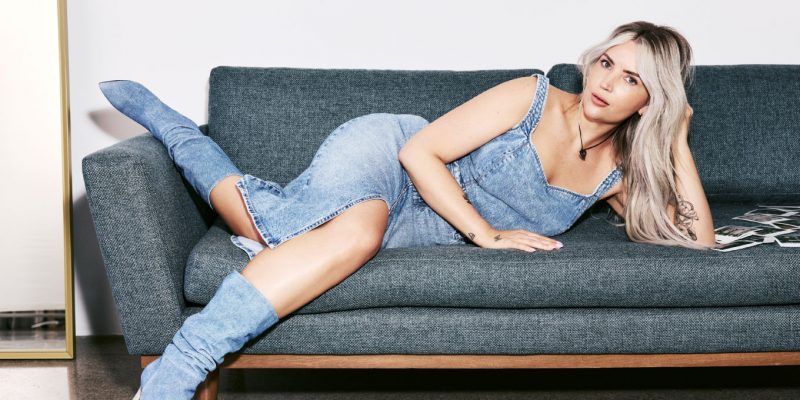
Fashion
Reitmans and The Birds Papaya Just Dropped The Dreamiest Spring Collection
Welcome to Sarah's Playhouse.
by : Melissa Fejtek- Apr 22nd, 2024
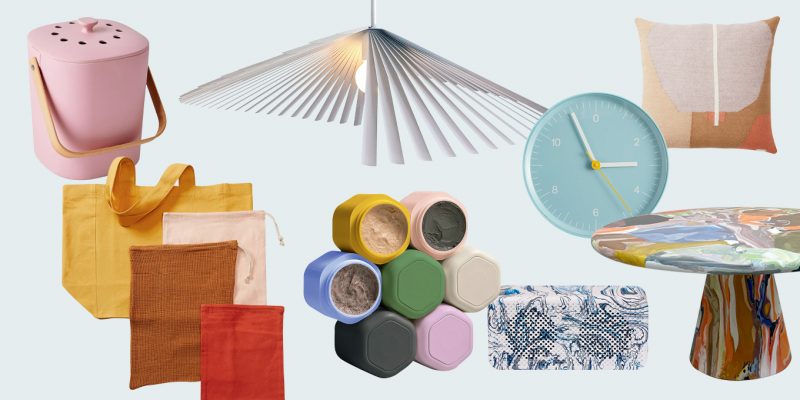
Decor
11 Zero Waste Decor Picks To Elevate Your Living Space
These brands are transforming waste materials into stylish products for your home.
by : Maca Atencio- Apr 22nd, 2024
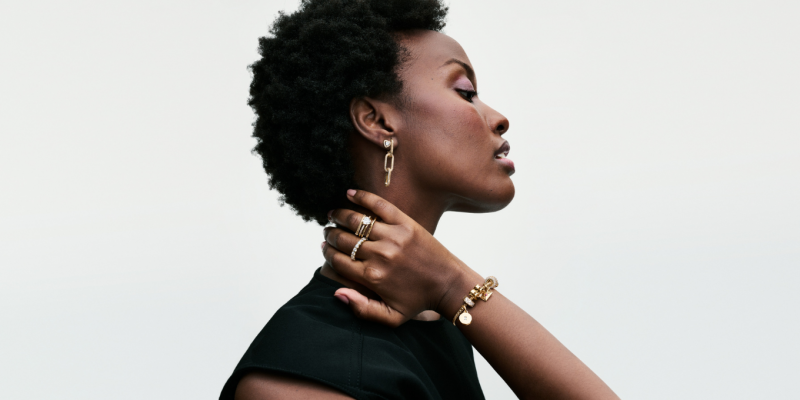
Fashion
This Jewellery Brand Has a Whole New Look And It’s Everything
Here are the seven pieces we’re coveting.
by : ELLE Canada- Apr 10th, 2024

